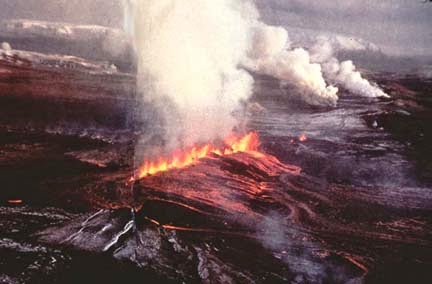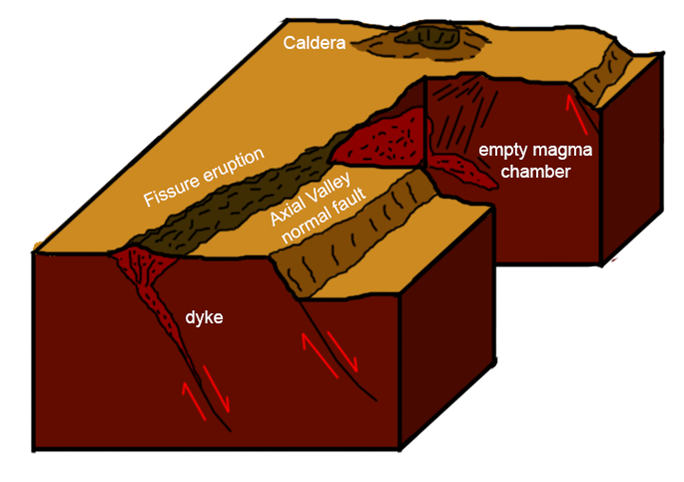FISSURE ERUPTIONS
As well as in the form of lava domes and seamounts (see earlier post), there is a third way magma can erupt onto the seafloor: as a fissure eruption. Fissure eruptions generally conjure up images of lava fountains erupting from long rifts in Iceland, and an underwater version of this eruption occurs 3000m deep at the Costa Rica Rift.

From our swath bathymetry data, we can identify a few large craters up to 2km wide dotting the seafloor, and their formation can be linked to these fissure eruptions. These craters (known as calderas) were probably once lava domes, formed by small eruptions from a shallow magma chamber when enough pressure had built up.

Occasionally the stress of the stretching crust pulling apart at the ridge will cause a fracture to open up perpendicular to the spreading direction. This fault will propagate through the crust laterally until the stress (known as tensile stress) has been dissipated. These fractures can sometimes propagate into the subsurface magma chambers, diverting the pressurised magma away from its usual eruption site at the lava dome. The magma will travel along this fracture, forming a dyke, and erupt in a long fissure eruption the length of the fault. These eruptions can often empty the magma chamber which reduces the pressure in the surrounding crust. A similar process to this occurs on land when water is extracted from an underground aquifer, resulting in subsidence. Here, the rapid exodus of magma causes a zone of decompressed crust to occur beneath the lava dome. The above crust will then collapse into this space compacting the magma chamber and resulting in a caldera forming at the surface, where once stood a 100m high lava dome.
